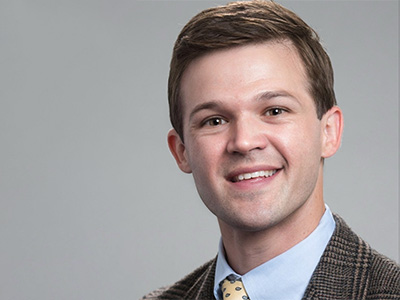 Department of Orthopaedic Surgery incoming resident David Patch, M.D., Director of Clinical Research and Vice Chair of Clinical Affairs Clay Spitler, M.D., and Assistant Professor Joseph Johnson, M.D., were featured in an Orthopedics Today article for their recent research.
Department of Orthopaedic Surgery incoming resident David Patch, M.D., Director of Clinical Research and Vice Chair of Clinical Affairs Clay Spitler, M.D., and Assistant Professor Joseph Johnson, M.D., were featured in an Orthopedics Today article for their recent research.
The article specifically featured their research “Understanding Postop Rehabilitation Preferences in Operatively Managed Proximal Humerus Fractures: Do Trauma and Shoulder Surgeons Differ?” which was published in the Journal of Shoulder and Elbow Surgery.
A proximal humerus fracture (PHF) is a fracture of the humerus on the part of the bone closest to the shoulder. Usually, surgeons can repair the fracture by using screws, plates, or even a complete joint replacement.
Following PHF repair, the surgeons work with physical therapists to prescribe and execute a rehabilitation plan. Patch, Spitler, Johnson, and other researchers wanted to study the difference between postoperative rehabilitation preferences and patient education between orthopaedic trauma and shoulder surgeons.
Researchers used an electronic survey and then statistically analyzed the data from the survey reponses. Ultimately, they concluded that trauma surgeons have a more aggressive approach to rehabilitation following operative PHF repair compared to shoulder surgeons regarding time to weight bearing status and passive ROM.
Authors of the study note that given the increasing incidence of PHFs and substantial variations in reported treatment outcomes, differences in rehabilitation after PHF treatment should be further evaluated to determine the role it may play in the outcomes of treatment studies.
All study authors included:
- David A. Patch, M.D.
- Logan A. Reed, B.S.
- Kevin A. Hao, B.S.
- Joseph J. King, M.D.
- Scott G. Kaar, M.D., MBA
- John G. Horneff, M.D.
- Jaimo Ahn, M.D., Ph.D.
- Jason A. Strelzow, M.D.
- Jonah Hebert-Davies, M.D.
- Milton T.M. Little, M.D.
- Peter C. Krause, M.D.
- Joseph P. Johnson, M.D.
- Clay A. Spitler, M.D.
To read the entire study and its methods, click here.